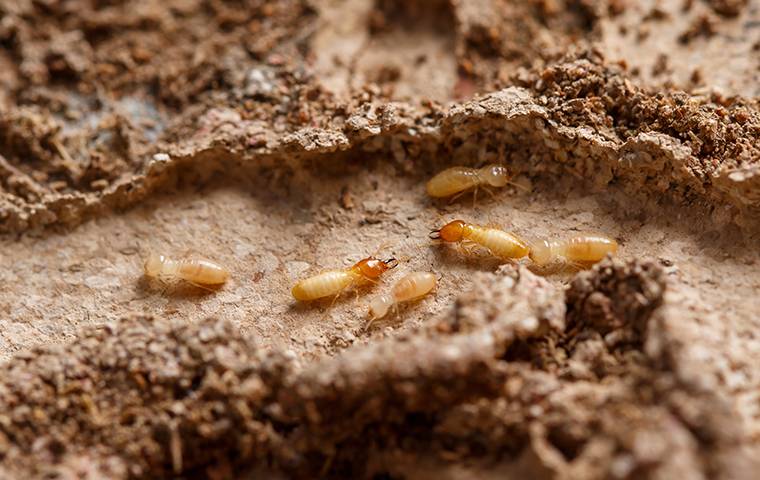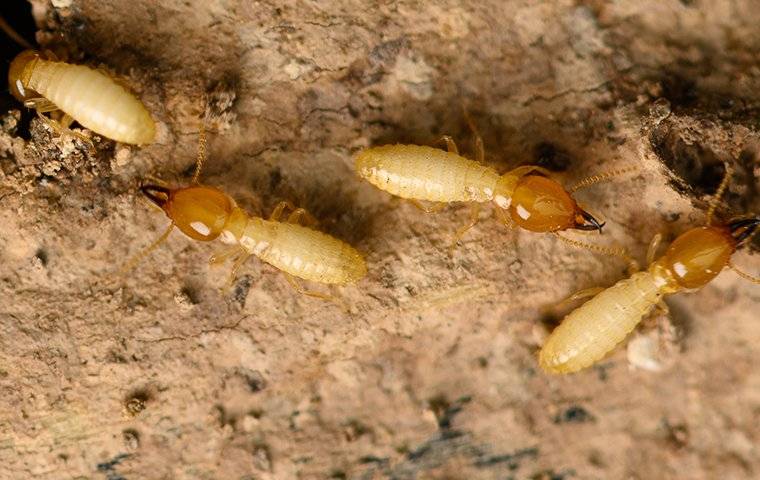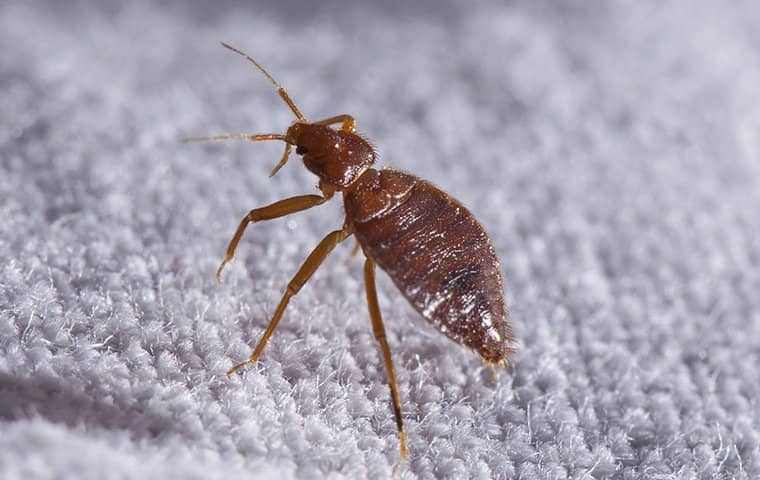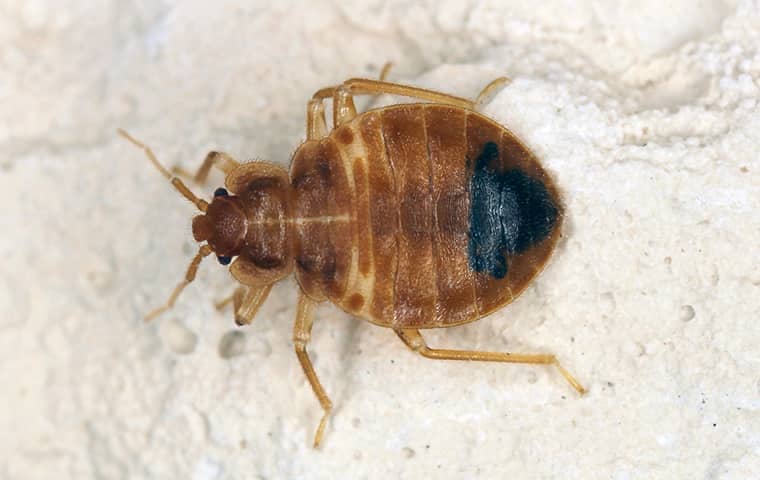Do you wish you could know everything about termite control in Richmond? Do you wish you could learn all of that information in about eight minutes? We have good news for you. We've packed a lot of information into this one, concise article. You may never need to learn another thing about termite control in North Carolina. We'll tell you why termites enter your yard, how they get into your home, and what they do when they find a way inside. We'll connect these facts to effective, all-natural termite prevention methods that work. If you already have a termite problem and you're long past avoiding termite damage, remember that your Go-Forth Pest Control team is here to help. We employ certified professionals with extensive experience addressing termite problems. When you need termite pest control in Richmond, we're the right company to call. Jump to our contact page for an effective resolution to your pest issues.


The Anatomy Of Termites: Understanding Their Behavior And Habits
Let's begin by discussing why termites enter your yard and how they find their way into your home. It has to do with termite behaviors and habits. These are simple organisms with simple patterns. Understanding these patterns unlocks the secret to termite damage prevention.
The first thing to understand is what kind of termites we have in Richmond. They are subterranean termites, which are the most destructive termites found in the United States. Why are they so destructive? It is because they are sneaky and persistent.
Termites can enter your yard randomly, but they often find a reason for doing so. Termites are looking for two things: food and moisture. If they find either of these, they'll select your yard. We're sure you know that termites eat wood, but you may not realize that they also eat other things that contain cellulose, such as cardboard, paper, and clothing. It is essential that you consider all of these food sources. A junk pile is likely to attract termites as much as a pile of dead branches.
If you have active termites in your yard, you can know for sure that they are going to find a way into your home. Worker termites move between rocks in the ground and can work their way up through cracks in your foundation, bringing soil up into the cracks as they go. If they can't find a crack, they can build mud tubes on your foundation to the wood of your home. These above-ground tunnels provide the protection termites need as they go in and out and cause damage. Detecting mud tubes is one of the best ways to uncover a termite infestation. Unfortunately, it isn't easy to find termite mud tubes. Let's look at how sneaky termites behave in your yard and inside your home.
The Silent Destroyers: Uncovering The Threat Of Termites
When termites select your property, you're not likely to know it. They are surprisingly sneaky insects that stay hidden in the ground or within the food source they're devouring. If you hope to uncover active termites, you need to understand their sneaky nature.
Worker Termites: Why is it so hard to find evidence of termite damage? It is because termite workers hate two things: Light and dry conditions. Their aversion to light is so great, they don't even like to come out in the moonlight. When you look for mud tubes or termite damage, you'll need to check in locations where even the light from the moon is obstructed, such as underneath a deck or in a crawl space. You'll also want to check damp or humid spaces. Termites are prone to dehydration, which is a big reason why they create mud tubes. The mud (created by soil and saliva) traps the humidity inside. When workers construct these tunnels, they often do so in dark, moist, and shielded environments, making detection tricky.
Swarmers: These are the winged reproductives of a termite colony. Their job is to leave the nest, select mates, and establish new nests. They do this quickly. A swarm can appear and disperse in the time it takes you to go grab a few groceries at the store. The only warning sign of an infestation you may find is the appearance of the wings that swarmers shed during the mating process. Keep watch for these white, equally-sized wings. You'll likely find these in concealed locations as swarmers are looking for ideal habitats for their offspring and are attracted to dark, moist, and shielded locations.
As you consider termite prevention, these facts will help you zero in on the evidence in your yard or home. Let's take a look at some of the many ways you can deter termites and catch termite activity early.
Protecting Your Property: Effective Termite Prevention Methods
We've covered a lot of ground. You know that termites are subterranean and that workers hide from view. You know that workers and swarmers leave evidence in hidden places because they hide from the light and are drawn to moist conditions. Now it is time to tie these facts to all-natural methods that work to prevent termite damage.
1. Remove anything in your yard that termites will eat.
We touched on this already but there are some specific steps you can take to remove food options beyond what we've shared.
- Pick up branches and remove them or store them in a container or bin.
- Remove logs, stumps, and other wood sources.
- Nurse dying trees back to health.
- Store junk in trash receptacles or bins.
- Trim wood skirting on structures.
- Replace wooden flowerbeds and landscaping borders.
Consider all termite food sources and remove them if possible.
2. Correct conditions that provide direct access to wood sources.
Worker termites can't access above-ground wood sources without making mud tubes. When they make these tubes, you can detect them more easily. These tips will help.
- Store campfire wood on a platform or mat.
- Put wooden deck posts on concrete foundations.
- Place storage sheds on a concrete foundation.
If you have any wood-to-soil contact, termites can sneak into food sources in your yard or directly into your home.
3. Address moisture problems and damp conditions.
Termite swarmers and workers are drawn to moisture and humidity. It is impossible to remove all moisture, but that doesn't mean you shouldn't take steps to make things dry between rainy days.
- Clean out any debris in your gutters.
- Fix damaged gutters and downspouts.
- Fix leaking garden hoses.
- Trim your landscape vegetation to create space between your plants.
- Blow leaves out of your landscaping and remove them from your property.
Yard work is essential if you want to deter termites from choosing your property.
4. Keep watch.
Termites are sneaky, but there are ways to catch them red-handed. You need to know where to look, and we've already covered that. Here are some practical examples.
- When you pick up dead branches in your yard, check for worker termites on the bottom side. Worker termites look like fat, pale-colored ants.
- When you pick up dead branches, consider the trees those branches are falling from because they may need some care. A tree doctor can help you with unhealthy trees.
- Crawl under structures or in your crawl space and use a flashlight to find mud tubes. These tubes look like wiggly mud lines that are about the width of a pencil. If several tubes are on top of each other, they can look like a mass or column.
- Look underneath your mulch. After doing so, you may want to consider replacing your mulch with pebbles or some other termite-resistant material.
If you are diligent, you can catch termites before they do significant damage to your home. When you catch them, take action as quickly as possible. There is no way to tell how quickly termites are damaging your home. You can have more than one colony at a time eating away at your equity.
Don't Wait To Act: Contact Us At The First Sign Of Termites
When is the right time to contact Go-Forth Pest Control for home pest control in Richmond? You could wait until you detect a termite problem, but that is a bit risky. Even if you are diligent, termites can sneak past your watchful eyes. In fact, termites can sneak past the watchful eyes of a trained pest control professional. That is why we use a foolproof method for colony elimination that comes with termite detection built in. It is called The Sentricon® System with Always Active™. The award-winning Sentricon® System is a termite bait solution. It is also a professional-grade termite control solution that requires professional installation. Our Certified Sentricon® Installers will place bait stations in the ground around your home and monitor them. If termites come near to your foundation, they'll find the bait because they are continually searching for food, and the Sentricon® bait is scientifically proven to be more interesting to termites than wood. When they find it, your technician will know—and you'll know because we'll tell you. The evidence found in the station is analyzed, and when needed, bait is switched to provide an appropriate level of control for the threat detected. So, whether one small colony comes to nibble on your property, or ten giant colonies, you're protected.
Would you like to learn more about The Sentricon® System? We'd love to tell you about it. We know of no better way to protect your Richmond property. If we did, we'd use it. Contact us today and speak with one of our friendly and knowledgeable professionals. We're here to help!





